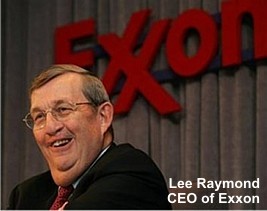 It's not an uncommon sales trick; gas prices are one example out of many that end in 9. Nearly all retail items these days price their products in the same way. It's easy to find small items, such as clothing, books, or groceries with prices that end in 99 cents, and prices for many big-ticket items, such as cars or computers, end in 99 dollars.
It's not an uncommon sales trick; gas prices are one example out of many that end in 9. Nearly all retail items these days price their products in the same way. It's easy to find small items, such as clothing, books, or groceries with prices that end in 99 cents, and prices for many big-ticket items, such as cars or computers, end in 99 dollars.
The gasoline industry has taken this tactic one step further and tacked on an extra 9/10ths of a cent to the price per gallon.
Folklore

There is quite a bit of folklore trying to explain this phenomenon. There are stories about retail price wars, penny newspapers, and even gas taxes. Some believe that because some taxes levied on the gas companies are 9/10ths of a percent of their volume of sales, they have passed that on to the consumer by increasing gas prices to 9/10ths of a cent.

In the end, though any or all of these things may have happened, many retail and academic studies have found that when prices end in 9, consumers will spend more money. It's a bit embarrassing to find out that most consumers are far more likely to purchase an item priced at $9.99 than the same item priced at $10.00, and there is little change in sales volume when the price changes from $5.00 to $5.99.

Plus, it makes for great marketing. Ads for the best laptop under $600 (sold for $599.99), or the best car under $10,000 (sold for $9,999), actually do fool consumers into thinking they're spending less money. Especially in these days of high gas prices, you could say that the gas companies are just doing what capitalism demands of them.
What is 9/10 of a cent worth?
So the gas companies take an extra 9/10 of a cent for every gallon of gas we buy--what is that actually worth?
According to the U.S. Energy Information Administration (EIA), "prime suppliers" of "motor gasoline" reported sales of 372,833.5 thousand barrels sold in February 2007. Each barrel represents 42 gallons, and to determine the value of 9/10 of a cent for each gallon, we did the following calculation:
372,834 x 1000 x 42 x .009 = $140,931,063
That means that in February 2007, gas companies collected an extra $141 million USD because of their unique pricing practices. Assuming Februrary is a rough average for the year, that's $1.7 billion USD in additional revenue!
What if gas prices were carried out to the 100th of a cent?
What if instead of 9/10 of a cent, or .009 of a dollar, gas prices could end in 99/100ths of a cent, or .0099 of a dollar. Statistically, the academics tell us that we wouldn't even flinch at such a miniscule increase in gas prices. Consumers are always looking at the big numbers on the left, so when we look at gas prices it's the $2 or $3 per gallon that we see, not the small change. This small increase spread across the masses can yield huge profits for the gas companies.
 Using the same data provided by the EIA, and altering the formula to value our assertion so that each gallon is worth $.0009 dollars more than they already collected, we end up with the following calculation:
Using the same data provided by the EIA, and altering the formula to value our assertion so that each gallon is worth $.0009 dollars more than they already collected, we end up with the following calculation:
372,834 x 1000 x 42 x .0009 = $14,093,106
Again, assuming that February 2007 gas sales represent an average of monthly gas sales for the year, then
the annual gain for gas companies would be somewhere near $170 million USD, collectively. If this tweak was applied globally, the total would be even more staggering.
There might be some costs associated with changing the signs, and it is possible that some drivers would reduce consumption out of protest; it seems that these would be negligible when compared to the gains that the gas companies would reap.
The EIA also tells us that the average US consumer uses 500 gallons of auto fuel each year. If the gas companies were to change gas prices to end in 99/100ths of a dollar, the cost to the consumer would be $0.45 USD per year, on average. It may not sound like much, but that's what got us into paying 9/10 of a cent to begin with.
